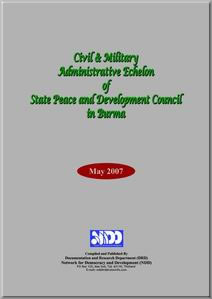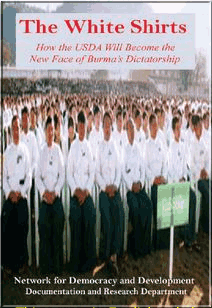Thailand has airlifted 30 tonnes of medical supplies to cyclone-hit Myanmar but so far the military regime there has not agreed to allow foreigners to enter the country to join in the relief effort.
More than 22,000 people are known to have been killed by tropical cyclone Nargis. Another 41,000 are missing.
New Zealand Prime Minister Helen Clark has expressed her concern about visa delays for aid workers trying to enter Myanmar.
Miss Clark says while the international community is standing by to assist, the response is being slowed by the military regime.
She says, so far, it has refused to waive visa requirements for aid workers.
Second supply shipment
The Thai Public Health Ministry and the Thai Red Cross Society say the latest shipment, the second in two days, included first aid kits, water purification tablets, rubbish bags and other supplies.
The ministry says 40 medical teams are on stand by to go into Myanmar, when they get permission.
The World Food Programme, the United Nation's food aid branch, began distributing rice in cyclone-damaged areas of the main city Yangon on Tuesday.
Rashid Khalikov, director of the UN office for the coordination of humanitarian affairs, appealed to Myanmar to waive visa requirements for UN aid workers, in the same way Pakistan and Iran did after disastrous earthquakes struck their countries.
However, aid agency World Vision in Australia said it had been granted special visas to send in personnel to back up 600 staff in the country.
'Worse' than tsunami
The UN estimates that hundreds of thousands of people in the country are in need of help
An aid worker in Myanmar says the country may have been hit harder by Cyclone Nargis than the 2004 Asian tsunami.
Kyi Minn, an adviser to World Vision's office in the main city of Yangon, says fields are littered with the corpses of victims.
Huge storm surge
The storm ravaged a huge swathe of southwestern Myanmar at the weekend, sending a massive storm surge into the Irrawaddy delta, where most of the deaths occurred.
The cyclone killed 10,000 people in one town alone when it swept through the Irrawaddy delta, with winds reaching up to 190km an hour and torrential rain.
State media reported that most of those who died were in the vast swamplands of the delta, which was hit by an enormous storm surge during the cyclone.
Relief and Resettlement Minister Maung Maung Swe said the wave was up to 3.5m high, sweeping away or inundating half the houses in low-lying villages.
State television has broadcast footage of massive destruction across the Irrawaddy delta, with boats washed away, houses caved in and massive trees uprooted and tossed into the streets.
The devastated town of Bogalay, where 10,000 people died and 95% of homes were destroyed, sits at the heart of the delta, and there are several other large cities in the affected areas.
They include Bago, 80km northeast of Yangon, with a population of 220,000.
Cyclone Nargis is the most devastating cyclone to hit Asia since one that ploughed into Bangladesh in 1991, killing 143,000 people.
Aid effort
As well as Thailand and India, a host of other countries have promised assistance, including Singapore, China, and the European Union.
The United States has released $US250,000 in immediate emergency aid and promised more, although Myanmar's military rulers have refused entry to a US disaster response team.
The New Zealand Government will give up to $500,000 to an appropriate UN agency.
Aid agencies World Vision, the Tear Fund and the Red Cross have all launched appeals for cash donations in New Zealand for Myanmar. World Vision hopes to raise $1 million.
(Source-http://www.radionz.co.nz/news/latest/200805071801/1dbd43a3)



















No comments:
Post a Comment